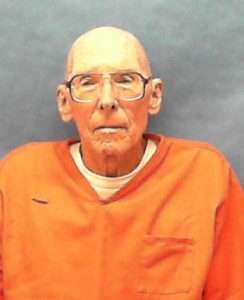William Zeigler was sentenced to death by the State of Florida for a quadruple murder
According to court documents William Zeigler would go to his family owned furniture store and murder his wife, Eunice Zeigler, and her parents, Perry and Virginia Edwards, as well as a customer named Charlie Mays at his furniture store in Winter Garden, Florida
William Zeigler would be arrested, convicted and sentenced to death
William Zeigler Photos

William Zeigler Now
| DC Number: | 053948 |
|---|---|
| Name: | ZEIGLER, WILLIAM T |
| Race: | WHITE |
| Sex: | MALE |
| Birth Date: | 07/25/1945 |
| Initial Receipt Date: | 07/19/1976 |
| Current Facility: | UNION C.I. |
| Current Custody: | MAXIMUM |
| Current Release Date: | DEATH SENTENCE |
William Zeigler Case
On Christmas Eve, December 24, 1975, Eunice Zeigler, wife of defendant (hereinafter referred to as wife), and Perry and Virginia Edwards, parents-in-law of defendant (hereinafter referred to as Perry and Virginia), were shot to death in the W.T. Zeigler Furniture Store in Winter Garden, Florida. In addition, Charles Mays, Jr., (hereinafter referred to as Mays), was beaten and shot to death at the same location. Times of death were all estimated by the medical examiner as within one hour of 8:00 P.M. The defendant was also shot through the abdomen.
The state’s theory of the case may be summarized as follows:
Edward Williams had known defendant (William Zeigler) and his family for a number of years. Williams testified that in June 1975 defendant inquired of him about obtaining a “hot gun.” Williams then went to Frank Smith’s home and arranged for Smith to purchase two RG revolvers. The revolvers were delivered to defendant. Also, during the latter part of 1975 defendant purchased a large amount of insurance on the life of his wife. Thus was shown the means and the motive.
Mays and his wife came to defendant’s furniture store during the morning of December 24 and Mays agreed to meet defendant around 7:30 P.M. The store was closed around 6:25 P.M.
Mays left his home around 6:30 P.M. He went to an Oakland beer joint and saw a friend, Felton Thomas, who accompanied Mays to the Zeigler Furniture Store.
The theory of the state’s case is that defendant (William Zeigler) had two appointments on Christmas Eve, one with Mays and one with Edward Williams. Prior to these appointments he took his wife to the store and in some manner arranged for his parents-in-law to go there. He killed his wife, Eunice, quickly, and for her, unexpectedly, since she was found with her hand in a coat pocket, shot from behind.
Because of the location of her body, Virginia was probably trying to hide among the furniture. Perry probably surprised defendant with his strength and stamina as they struggled for some time. After defendant subdued Perry and rendered him harmless, defendant shot him. Considering the fact that a bullet penetrated Virginia’s hand, the state said it was likely she was huddled in a protective position when she was executed.
Defendant then left the store, returning to meet with Mays who had arrived there at about 7:30. He was probably surprised to see the presence of another man, Felton Thomas, with Mays. He took Thomas and Mays to an orange grove to try the guns. The state says that the purpose of the trip was to get the two to handle and fire the weapons in the bag. From the grove he returned to the store, but was unsuccessful in getting Mays or Thomas to provide evidence of a break-in. He did, however, get Thomas to cut off the lights in the store. The three returned to defendant’s home. Defendant got out, went to the garage, came back and took a box of some kind to Mays and told him to reload the gun. They returned to the store. Defendant could not persuade Thomas to enter the store, so Thomas lived. When Thomas disappeared, the defendant returned to his home and picked up Edward Williams. Defendant had killed Mays.
Defendant (William Zeigler) was successful in getting Williams partially inside the back hallway. Defendant put a gun to Williams’ chest and pulled the trigger three times, but the gun did not fire. Williams said, “For God’s sake, Tommy, don’t kill me,” and ran outside, refusing to return to the store. The state says that the empty gun was as much a surprise to defendant as it was to Williams. The state says that in all probability defendant thought he was holding the gun that Mays had shot in the orange grove and which defendant told Mays to reload.
When he was unable to get Williams into the store, the defendant became desperate and conceived the idea that he would appear uninvolved if he happened to be one of the victims. Accordingly, he shot himself and then called Judge Vandeventer’s residence where he knew the police officers would be.
The defendant (William Zeigler) denies that he had any contact with Smith or purchased any guns from him. He says that the increase in the amount of the insurance policy [on his wife’s life] was pursuant to advice on an estate plan. Defendant says that his wife, Perry, and Virginia were killed during the course of a robbery; that Mays was involved in the robbery but was killed by his confederates; that he was shot by the burglars and left to die. The jury obviously did not believe the testimony of the defendant. To have believed his story, the jury would necessarily have had to disbelieve the testimony of Smith, Thomas, and Williams and would have had to have found no significance in the other substantial evidence.
